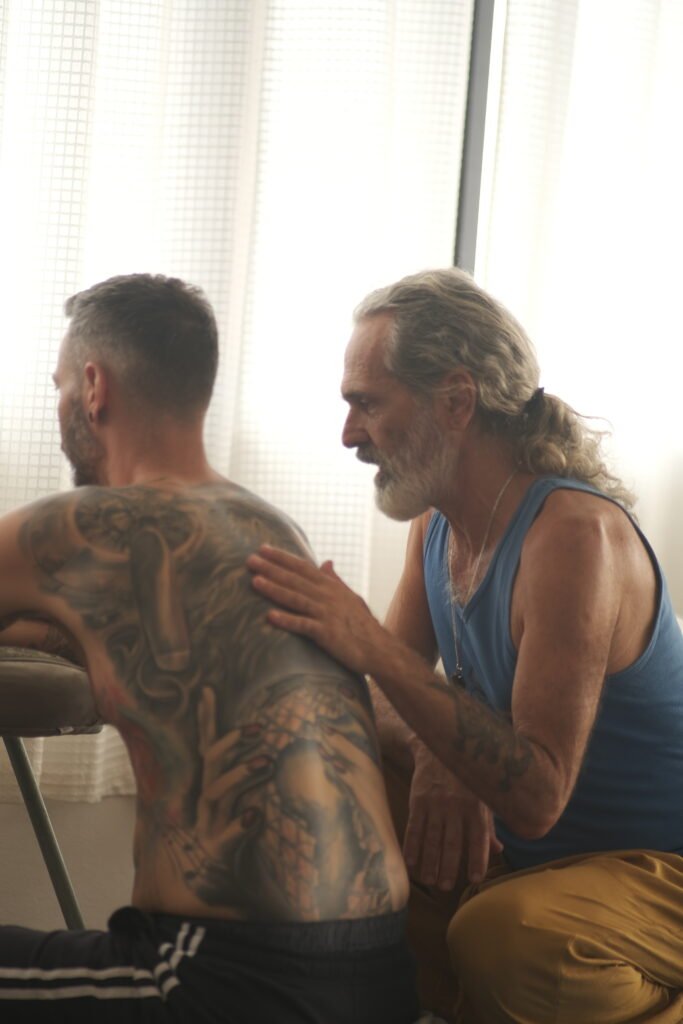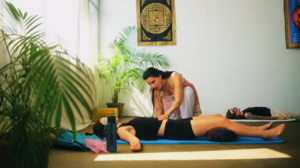Touch in Breathwork Sessions: The Power and Responsibility
Many times, students and breathers ask me after a session, “How did you know where to touch? It was exactly what I needed.” My answer is often that this understanding comes from years of practice, experience, and intuition.
However, I always reflect on the foundation of this skill, which was built during my breathwork training. Back then, when I was assisting my breathwork master, we were strictly prohibited from touching breathers during many sessions. Our role was to simply observe and learn. Why? Because touch in breathwork, particularly during a Non-Ordinary State of Consciousness (NOSC), is far more than just physical.

The WAIT Principle
Touch in breathwork is a sensitive and significant aspect of the process. Before touching, every facilitator should pause and ask themselves:
Why
Am
I
Touching?
This simple yet profound question ensures that the intention behind the touch is clear and aligned with the breather’s needs—not the facilitator’s ego or assumptions.
Is the touch truly to support the breather in releasing energy, moving through blockages, or grounding them? Or is it coming from a desire to influence their experience based on what the facilitator thinks is best? This self-awareness is essential for ethical and effective facilitation.

The Essential Role of Consent in Touch
In breathwork sessions, obtaining consent before using touch is absolutely essential. It’s more than just a polite gesture—it’s about creating a space where participants feel safe, respected, and comfortable during their experience.
Explain what the touch might involve, such as for example tapping the chest area, placing a hand on the belly to bring awareness to the breath, or holding their hand or feet for support etc.
If it’s a private session, take the time to talk with the breather beforehand about the possibility of touch and explaining how it might look like. Explain how it might be used during the session and why, and be clear that they can change their mind at any point. Consent is not a one-time agreement—it’s something that should be ongoing and respected throughout the session.
For group sessions, a simple approach works best. Ask everyone to close their eyes and invite those who don’t wish to be touched to indicate this with a gesture, like raising their hand. It’s important to explain that whatever their decision, it’s completely okay, and as a facilitator, you will honor and respect it fully. Remind them that even if they initially agree to touch, they can signal during the session if they no longer feel comfortable.
There are, however, rare moments when touch might be necessary for safety reasons. For instance, in holotropic breathwork, participants can sometimes move in ways that could unintentionally harm themselves or others. In such cases, the facilitator’s touch is used only to ensure safety and to gently guide them out of potential harm. This is something you should explain at the start of the session, so participants understand that your primary role is to support and protect them.
By making consent a core part of your practice and openly communicating your intentions, you create an environment of trust and care. This allows participants to fully relax into the process, knowing they are seen, respected, and supported every step of the way.

Types of Touch in Breathwork and Their Purposes
Touch, when used thoughtfully, can enhance the breathwork process by providing support, grounding, and energy release. Below are some common types of touch used in breathwork and their purposes:
1. Grounding Touch
o Helps participants stay present and connected to their bodies, particularly if they feel disoriented or overwhelmed.
2. Comforting Touch
o Provides reassurance and emotional support during moments of vulnerability or emotional release.
3. Guiding Touch
o Assists participants in adjusting their posture or breathing to enhance the session’s flow.
4. Energizing and Releasing Touch
o Facilitates the release of tension, blockages, or trauma and stimulates energy flow.
o Tapping: Promotes relaxation, releases physical or emotional blockages, and stimulates energy flow.
o Shaking: Helps discharge built-up tension or trauma, allowing the body to reconnect with its natural rhythms.
5. Supportive Touch
o Offers physical stability during intense emotional or physical experiences, creating a safe space for the breather.
6. Closing/Integration Touch
o Grounds and connects participants as they transition out of the NOSC, helping them integrate their experience.

The Responsibility of Touch
Touch in breathwork carries immense power. It must always be intentional, ethical, and respectful of the participant’s autonomy and comfort. Facilitators must prioritize clear communication, consent, and an understanding of the breather’s needs.
As facilitators, our touch is not just physical—it’s a bridge of trust, energy, and healing. By using it thoughtfully and with awareness, we can create a space where participants feel safe, supported, and empowered to heal and grow.
Final Thought
Touch is a gift, and with it comes the responsibility to honor the process and the person in front of us. By continually practicing self-awareness and grounding our intentions, we can make touch a transformative tool in breathwork sessions.

